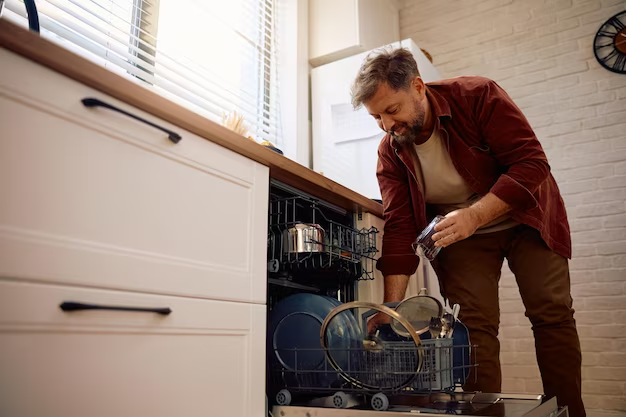Mastering the Art of Removing Dents from Your Refrigerator: Tips and Techniques
Refrigerators are indispensable kitchen appliances that generally stand the test of time. However, despite their durability, accidents happen. A casual bump with the vacuum cleaner, an enthusiastic toddler with a toy, or a clumsy moment with a frying pan can easily lead to dents on your otherwise pristine refrigerator. Such marks, while typically not affecting the appliance's performance, can be quite an eyesore. Fortunately, with a few household items and some patience, you can dodge a costly repair or a call to the professionals by tackling these dents yourself. Let’s dive into how you can restore your fridge’s flawless look.
Understanding the Nature of Refrigerator Dents
Before you start on the repairs, it’s vital to understand the type of material you're dealing with and the nature of the dent:
Identifying the Material
Refrigerators today come in various finishes, including stainless steel, aluminum, and coated metals. Identifying the finish of your fridge can help determine the appropriate method for fixing the dent:
- Stainless Steel: Generally more resistant to damage but requires specific care.
- Aluminum: Lighter and can dent more easily than stainless steel.
- Coated Metals: May have a layer of paint that can chip if not handled carefully.
Assessing the Dent Type
Dents can vary significantly in size and shape. Understanding the nature of the dent can help you choose the right approach:
- Shallow Dents: Typically easier to fix and often require less invasive methods.
- Deep Dents: May need more involved techniques and possibly professional attention.
Do-It-Yourself Techniques for Dent Removal
Let’s explore some effective DIY methods to tackle those pesky dents.
Using Heat and Cold
This method exploits the expansion and contraction properties of metals.
- Heat Application: Use a hairdryer to blow hot air on the dent for about 30 seconds. The heat will cause the metal to expand slightly.
- Rapid Cooling: Immediately spray the area with compressed air upside down. The sudden cold causes the metal to contract, potentially popping the dent out.
⚠️ Tip: Always wear protective gloves to avoid burns or frostbite.
Suction Cup Method
This technique is similar to how paintless dent repair is conducted on vehicles.
- Acquire a Dent Puller: Purchase a suction cup-based dent puller from a hardware store.
- Moisten the Dent: Lightly moisten the dent area to improve suction.
- Apply and Pull: Firmly attach the suction cup to the dent and pull. This method works best for larger, shallow dents.
The Wooden Block Technique
For those without a dent puller, a simple wooden block and hammer can work wonders.
- Place the Block: Position a piece of softwood against the dent from the inside of the fridge, if accessible.
- Tap Gently: Gently tap the block with a hammer to push out the dent. The wood prevents damage to the fridge's surface.
⚠️ Note: Ensure the wooden block is soft to prevent scratching or further damage.
Traditional Approaches for Specific Dent Types
While modern techniques can work wonders, sometimes traditional methods can better target specific issues.
The Use of Boiling Water for Plastic Refrigerators
If your fridge door is plastic, the combination of heat from boiling water may help corrigate dents.
- Pour Boiling Water: Carefully pour boiling water over the dented area.
- Pop It Out: As with the heat and cold method, the heat may cause the plastic to expand and the dent might naturally pop back out.
Rubber Mallet Approach for Robust Finishes
With more robust materials, using force with precision can be effective.
- Back the Dented Area: If possible, support the undented side of the metal with your hand.
- Tap with a Mallet: Use a rubber mallet to gently tap the dent back into place. This requires finesse to ensure you don’t exacerbate the problem.
When to Seek Professional Help
Not all dents can be easily managed at home. Here are instances where you might consider professional repair:
Severe Creases
- Complex Shapes: Dents with deep creases or those that affect the structural integrity may need professional tools.
- Surface Damage: If the dent has also resulted in scratches or paint damage, expert help can restore both aesthetics and surface protection.
Appliances with Warranty
- If your fridge is under warranty, attempting a repair yourself may void the coverage. Always check with the manufacturer for professional services under warranty.
Material-Sensitive Repairs
- For luxury finishes like brushed stainless steel or custom coatings, professionals can ensure color and texture match.
Summary: Key Takeaways on Refrigerator Dent Repair
🔑 Quick Tips:
- Heat and Cold: Use a hairdryer and compressed air for simple dents.
- Suction/Block: Employ a dent puller or wooden block for larger areas.
- Boiling Water: Ideal for plastic finishes to naturally revert dents.
- Rubber Mallet: Gentle tapping can fix stubborn metal creases.
- Professional Assistance: For severe damage or under warranty cases.
🛠️ Practical Steps:
- Prepare Area: Clean the dent area for better results.
- Safety Gear: Wear gloves to protect against heat or sharp edges.
- Patience: Repeat methods if necessary for perfection.
By understanding the type of dent and the material of your refrigerator, you can choose the best repair method and restore your appliance’s appearance effectively. Whether you opt for a DIY technique or professional service, maintaining your fridge’s aesthetics keeps your kitchen stylish and in top shape.
Dealing with dents successfully requires a mix of understanding, technique, and a bit of luck. With patience and the right tools, those dents will seem like a distant memory, leaving your refrigerator as the gleaming cornerstone of your kitchen once more.
